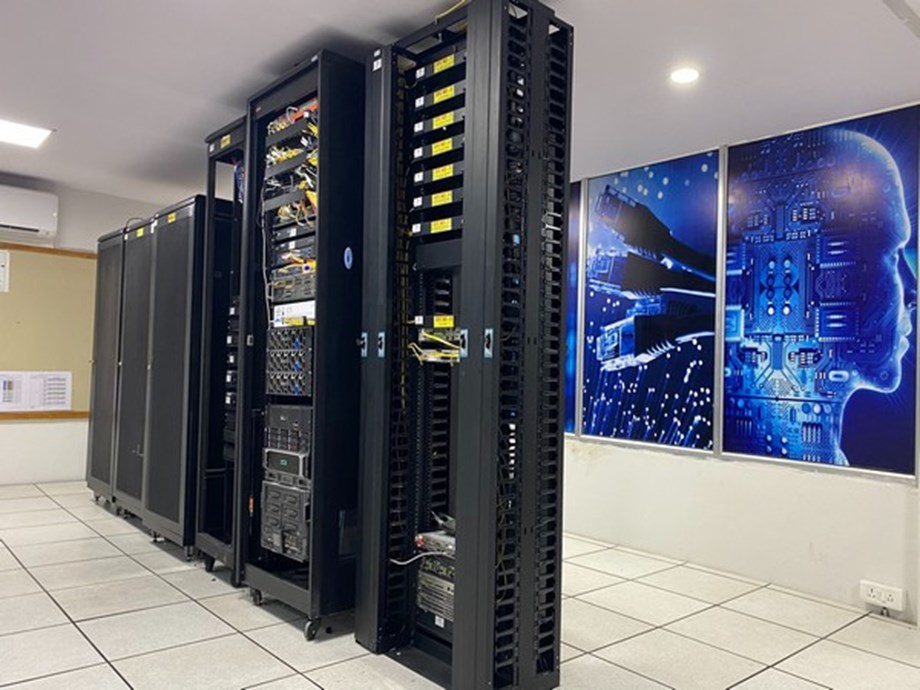PARAM ANANTA, a state-of-the-art supercomputer at IIT Gandhinagar dedicated to the nation as part of the National Supercomputing Mission (NSM) – a joint initiative of the Ministry of Electronics and Information Technology (MeitY) and the Ministry of Science and Technology (DST). commissioned May 30, 2022 by Smt. Sunita Verma, Group Coordinator and Researcher “G”, MeitY in the kind presence of Prof. Amit Prashant, Acting Director, IIT Gandhinagar; Colonel AK Nath (retired), Executive Director, C-DAC, Pune; Shri Naveen Kumar, NSM-HPC Department, MeitY; dr Hemant Darbari, Head of Mission – NSM, Dr. Namrata Pathak, Associate Director/Researcher F, DST; Shri Sanjay Wandhekar, Senior Director, C-DAC, Shri Prashant Dinde, Associate Director, CDAC, Shri BSV Ramesh, Joint Director, CDAC along with senior officials from MeitY, DST, IIT Gandhinagar and C-DAC. The PARAM ANANTA supercomputing facility will be built in Phase 2 of the NSM, where most of the components used to build this system have been manufactured and assembled in-country, along with an indigenous software stack developed by C-DAC, in line with the make-in India Initiative.
On October 12, 2020, a Memorandum of Understanding (MoU) was signed between the IIT Gandhinagar and the Center for Development in Advanced Computing (C-DAC) to establish this 838 TeraFlops Supercomputing Facility under NSM. The system is equipped with a mix of CPU nodes, GPU nodes, high-memory nodes, high-throughput storage, and high-performance Infiniband interconnects to meet the computing needs of various scientific and engineering applications.
The PARAM ANANTA system is based on direct contact liquid cooling technology to achieve high power efficiency and thereby reduce operating costs. Several applications from different scientific fields such as weather and climate, bioinformatics, computational chemistry, molecular dynamics, materials science, computational fluid dynamics, etc. have been installed on the system for the benefit of researchers. This high-end computing system will bring great added value to the research community.
The PARAM ANANTA Supercomputing Facility will be of great benefit to the IIT Gandhinagar to continue research and development (R&D) activities in multidisciplinary fields of science and technology at the institute including but not limited to artificial intelligence (AI), machine learning ( ML ) and data science; computational fluid dynamics (CFD); bioengineering for genome sequencing and DNA studies; Computational biology and bioinformatics for prediction and recognition of gene networks; Atomic and molecular sciences, which help understand how a drug binds to a specific protein; Climate change and environmental studies for extreme weather forecasts and simulation of models that can predict cyclone onset; Energy studies, which help to perform design simulations and optimization of energy conversion devices at different scales; fire dynamics simulation; Nanotechnology; Robotics; Applied Mathematics; astronomy and astrophysics; materials science; quantum mechanics; Study of civil engineering and structural mechanics to understand the dynamic behavior of buildings, bridges; and complex structure.
A part of the total computing power is also to be shared with the nearby academic and research institutes, according to NSM’s mandate. Additionally, NSM has sponsored a number of applied research projects utilizing this supercomputing facility involving researchers for and other Indian institutes and industries. Overall, this supercomputing facility will give a great boost to the research and development initiatives in Indian science and industry to achieve a position of global prestige.
To date, 15 supercomputers with a total computing capacity of 24 petaflops have been installed across the country under NSM. All these supercomputers were manufactured in India and work with a specially developed software stack.
(With inputs from PIB)

